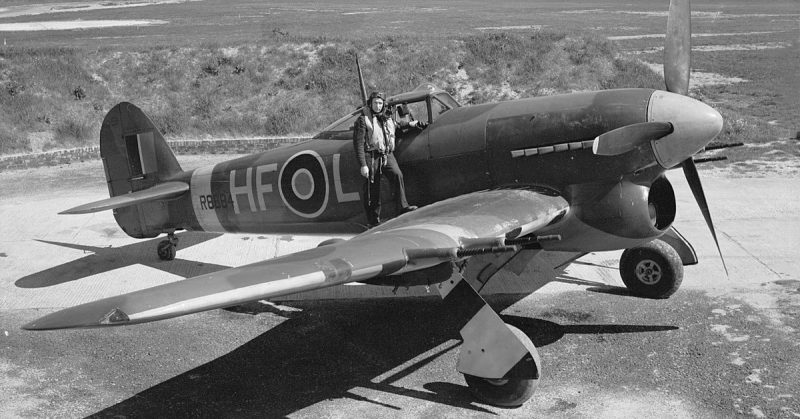Though it never quite lived up to its intended role, the Hawker Typhoon was still a valuable asset in the British armory of the Second World War. It acted as a specialist interceptor and later as a hard-hitting fighter-bomber, taking it from home defense to supporting the invasion of Germany.
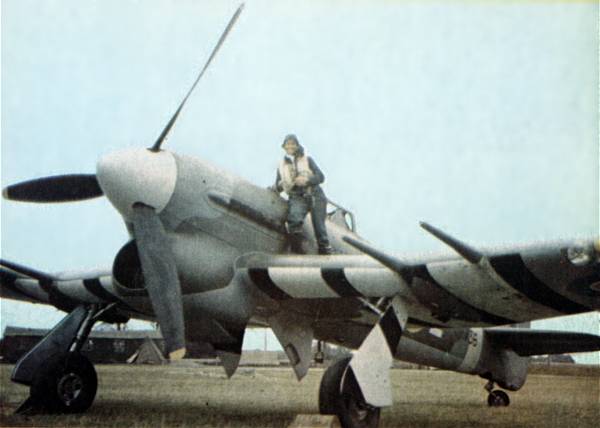
Planned as an Interceptor
The Hawker Typhoon was originally intended to serve as an interceptor. This was a vital role in the air war, targeting enemy aircraft and taking them out before they could launch attacks against British targets. As German planes got better, British interceptors had to do the same in a constant spiral of improvements.
Designed Around the Engine
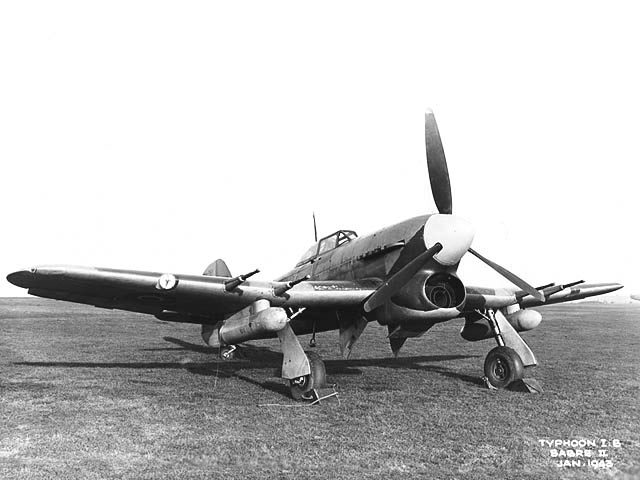
The British Air Ministry provided a specification for a fighter that would make use of new engines being developed by Rolls-Royce and Napier. The Typhoon was designed to meet this specification, using the Napier Sabre, a 24-cylinder 2000 horsepower engine.
Troubled Development
The Typhoon faced a series of problems during its development and production. This led to serious delays in getting the plane into action. Though a Typhoon flew for the first time in February 1940, the fully developed plane wasn’t delivered to the Royal Air Force (RAF) until August 1941.
A New Speed Record
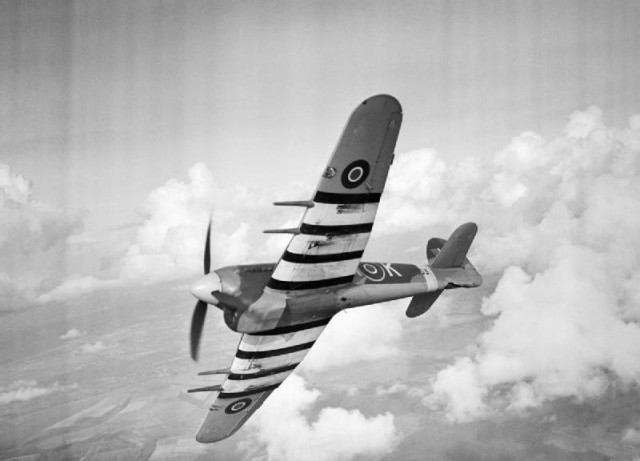
The Typhoon was the first RAF fighter to reach a speed of 400 miles per hour, thanks to its Napier Sabre engine.
Effective Weaponry
The Typhoon was equipped with four 20mm cannons, fitted midway along the wings. Cannons were increasingly replacing machine-guns as the weapons of choice for fighter aircraft. Technological advances such as Germany’s self-sealing fuel tanks meant that planes were more likely to survive machine-gun hits. The explosive ammunition of cannons countered these advances, making fighters more effective.
Engine Problems
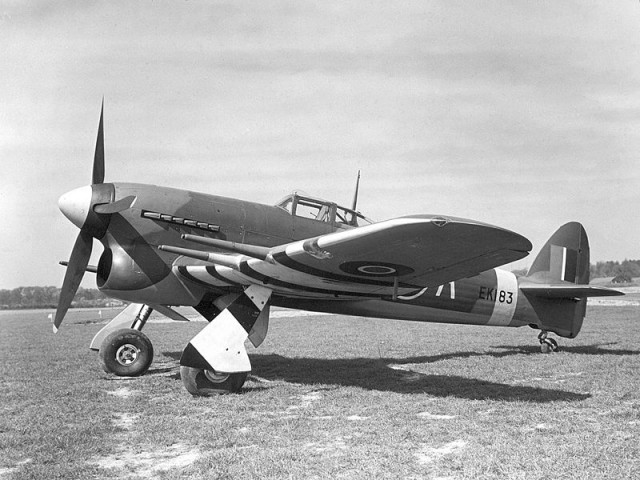
Unfortunately, the rush to get a faster plane into the air came with a downside. The Sabre engine had been incorporated into planes before it was really ready. It didn’t perform well at high altitudes, which it took too long to reach thanks to its low rate of climb. Speed was good, but on its own, it wasn’t enough for an interceptor, which needed to be able to climb quickly to face threats and to reach high altitudes to take out enemy bombers.
Tail Trouble
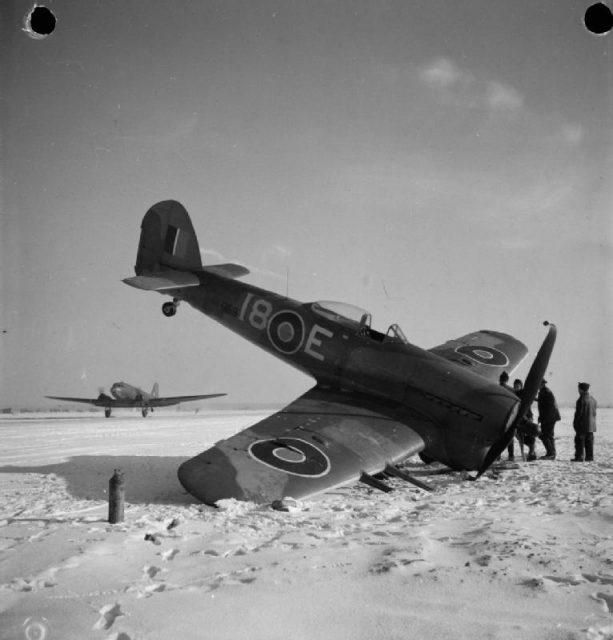
Early Typhoons also suffered from a structural weakness in the tail. This led to the deaths of several pilots before the problem was fixed.
Almost Withdrawn from Service
Given its multiple problems, the RAF almost gave up on the Typhoon, and the whole fleet of these fighters was nearly withdrawn from service. Fortunately, the Hawker engineers were able to fix most of the problems, creating a serviceable aircraft. The only problem remaining was engine performance.
Finding a Niche
The Typhoon found a place of value in the British air fleet thanks to a new arrival on the German side – the Focke-Wulf Fw190.
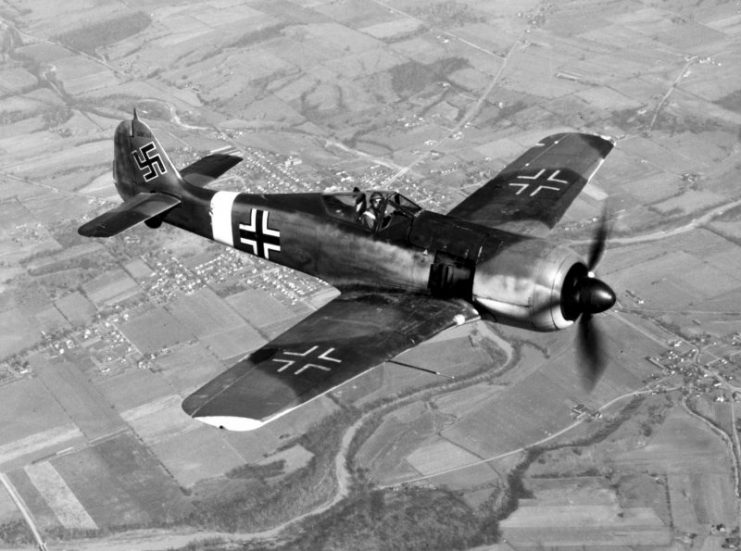
The Fw190, possibly the best German plane of the war, entered service in September 1941. It ended the aerial superiority of the Supermarine Spitfire V, giving Germany the edge in fighter combat. One of its great advantages was its high speed, which most British fighters could not match.
Fw190s equipped as fighter-bombers began making raids against targets on the south coast of Britain, using their superior speed to make a safe getaway. The Typhoon was the only British fighter that could catch up with and destroy these raiders, thanks to its top speed of 412mph. The RAF deployed Typhoons in this role, and within days they had destroyed four Fw190s.
This role finally made good use of the Typhoon’s combination of high speed and low altitude. But it was in another role that the Typhoon really made its mark.
Turning into a Fighter-Bomber
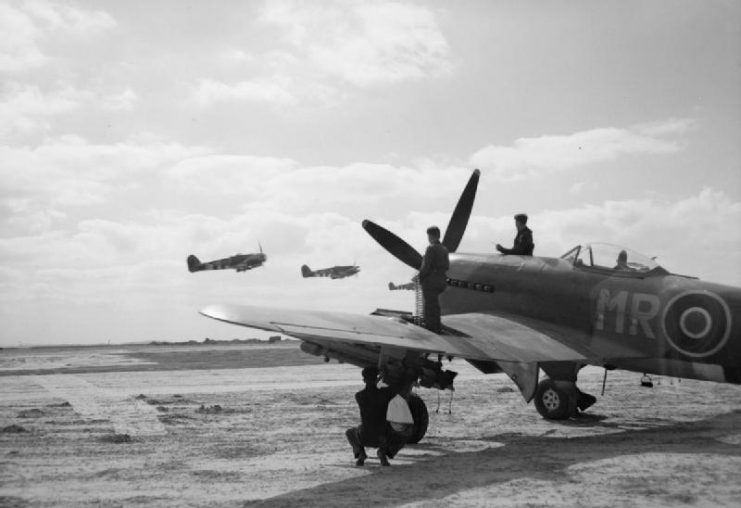
As its capabilities were better understood, the Typhoon started to be used as a fighter-bomber rather than an interceptor. It was far more effective in this role, where it could be used in aerial raids and supporting ground troops. Though the RAF’s grand strategy focused on strategic heavy bomber raids, the successes of the Luftwaffe had shown how useful fast striking fighter-bombers could be in support of ground troops, and the Typhoon became a valuable part of the British arsenal.
Returning the Raids
From 1943, the tables were turned. Instead of intercepting German fighter-bomber raids along the British coast, Typhoons were sent on raids of their own against German targets in occupied France and the Low Countries.
Adding Rockets
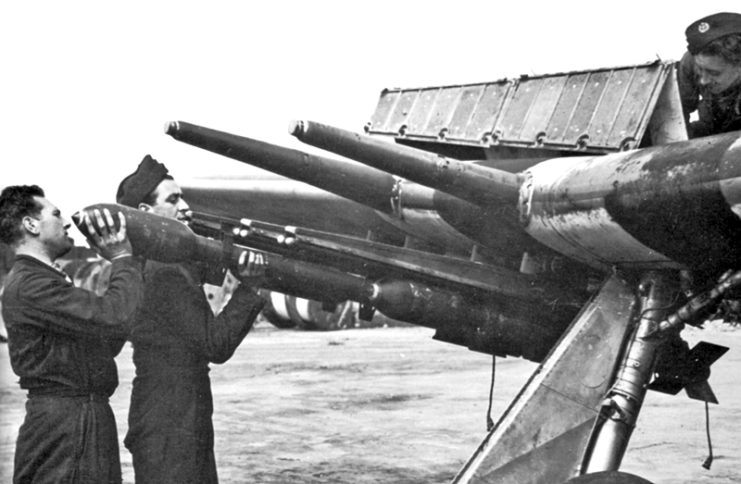
Late in 1943, Typhoons were equipped with rockets for the first time. Weapons racks under the planes could now carry either two bombs or eight rockets.
The targeted destructive power of the rockets turned the Typhoons into a devastating strike force, able to deliver sudden attacks before making a quick getaway.
Supporting D-Day
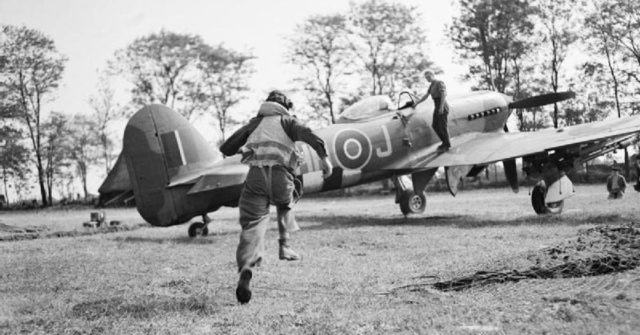
During the D-Day operations of June 1944, Typhoons were used in tactical raids against German infrastructure. In particular, they targeted communications sites in a relentless series of attacks by both day and night. This was part of a wider campaign to cripple German communications and was a huge help to the success of the D-Day landings.
Into France and Holland
As the Allies progressed across western Europe in 1944, the Typhoon came with them, playing an important supporting role. It accompanied the Allied advance across France and Holland, targeting German positions in support of Allied ground troops.
Fondly Named
The early Typhoon pilots had reason to hate their unreliable and accident-prone machines, but as it proved its worth, the plane earned its own nickname – “Tiffies” had become a vital part of the RAF.
26 Squadrons
By the end of the war, Typhoons made up 26 squadrons of the 2nd Tactical Air Force. It was an impressive presence for a plane that nearly faced the scrap heap.
